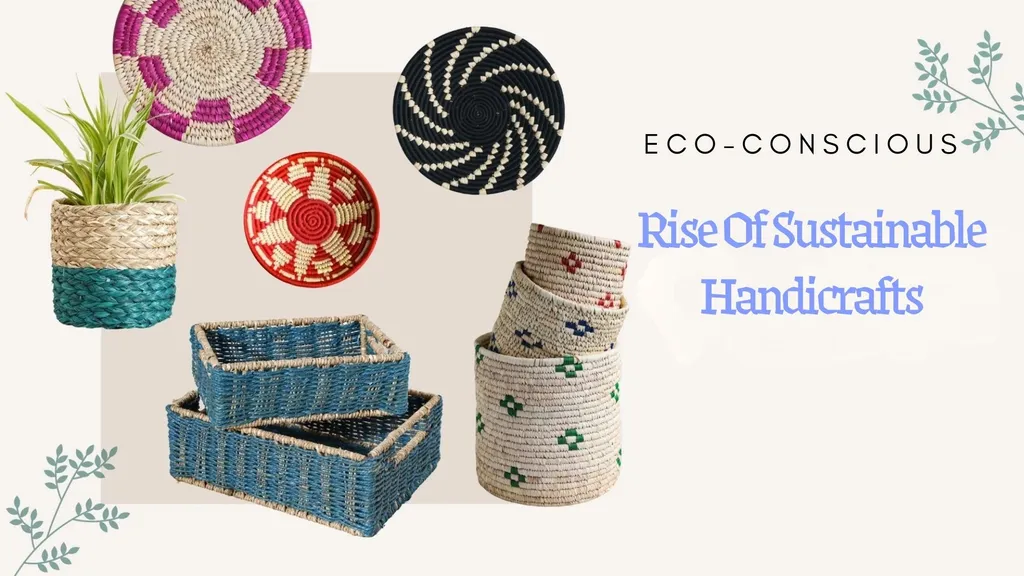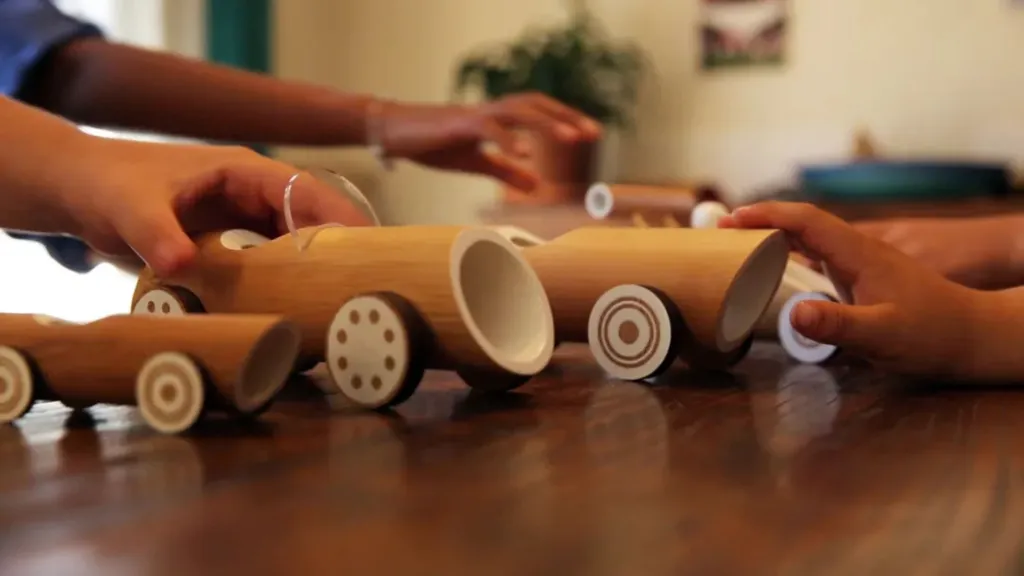Contents

In a world increasingly attuned to environmental challenges, a quiet revolution is reshaping consumer habits. Eco-conscious consumers are driving a surge in demand for sustainable products, and Vietnam’s bamboo and rattan handicraft industry is at the forefront of this movement. These artisanal creations, rooted in centuries-old traditions, are finding new life as eco-friendly alternatives that blend cultural heritage with modern sustainability. From intricately woven baskets to elegant home decor, sustainable handicrafts are capturing the hearts of those who value ethical production and environmental stewardship. This blog explores how eco-conscious consumerism is fueling the rise of sustainable bamboo and rattan handicrafts, highlighting their environmental benefits, cultural significance, and the innovative practices transforming the industry.
Understanding Eco-Conscious Consumerism
Eco-conscious consumerism is more than a passing trend—it’s a lifestyle shift where individuals prioritize purchases that align with their environmental and ethical values. These consumers are discerning, seeking products that minimize ecological harm while supporting fair trade and local communities. In Vietnam, where bamboo and rattan handicrafts are a cultural cornerstone, this shift is creating exciting opportunities for artisans to meet global demand for sustainable goods.
Characteristics of Eco-Conscious Consumers
Eco-conscious consumers are defined by their commitment to sustainability and ethical practices. They often belong to younger demographics, with millennials and Gen Z leading the charge—28% more likely to prioritize sustainability than the average adult. Many have significant purchasing power, allowing them to invest in premium, eco-friendly products like handwoven bamboo baskets or rattan furniture.
These consumers value transparency, researching a product’s origins, materials, and production processes to ensure alignment with their values. They prefer quality over quantity, opting for durable, timeless pieces that reduce waste. Community engagement is also key, with many participating in sustainable living workshops or online forums to connect with like-minded individuals. This dedication to social and environmental causes makes them powerful advocates for Vietnam’s sustainable handicraft industry.
Why Eco-Conscious Consumers Choose Sustainable Handicrafts
The motivations behind eco-conscious choices are deeply personal yet universally impactful. Consumers are driven by a desire to combat climate change, preserve natural resources, and support ethical labor practices. For Vietnam’s bamboo and rattan artisans, this translates into a growing market for products that embody sustainability and cultural authenticity.
Environmental and Ethical Motivations
At the core of eco-conscious consumerism is an awareness of humanity’s environmental footprint. Consumers seek products made from renewable materials like bamboo and rattan, which are biodegradable and sustainably sourced. These materials, abundant in Vietnam, require minimal processing and leave a smaller carbon footprint compared to synthetic alternatives. Additionally, eco-conscious buyers prioritize fair trade practices, ensuring artisans are fairly compensated and work in safe conditions, aligning with Vietnam’s tradition of community-driven craftsmanship.
Supporting Local Economies and Traditions
Choosing bamboo and rattan handicrafts allows consumers to support Vietnam’s local economies and preserve cultural heritage. Each piece tells a story of skilled artisans who have honed their craft over generations, weaving together tradition and sustainability. By investing in these products, consumers contribute to the livelihoods of rural communities, fostering economic resilience and cultural pride.
The Impact of Eco-Conscious Consumers on Vietnam’s Handicraft Market
Eco-conscious consumers are transforming Vietnam’s bamboo and rattan handicraft industry, driving innovation and sustainability. The global handicraft market is projected to reach 23,640,000 VNĐ (approximately USD 983.12 billion) by 2030, fueled by demand for eco-friendly products. In Vietnam, artisans are responding by adopting sustainable practices that meet these expectations while preserving the authenticity of their craft.
Rising Demand for Sustainable Handicrafts
The demand for sustainable handicrafts is reshaping market dynamics. Consumers are drawn to the unique aesthetic and eco-friendly nature of bamboo and rattan products, from intricately woven storage baskets to stylish furniture. These items align with the slow living movement, emphasizing quality, durability, and minimalism. Social media platforms like Instagram and Pinterest amplify this trend, with artisans showcasing their creations and sharing stories of sustainable production, connecting directly with eco-conscious buyers worldwide.
Opportunities and Challenges for Artisans
The shift toward sustainability presents both opportunities and challenges for Vietnamese artisans. Adopting eco-friendly practices, such as using natural dyes or upcycled materials, requires investment in training and resources. However, these efforts open doors to new markets, particularly among younger consumers who value ethical production. Artisans who embrace sustainability can build brand loyalty and tap into the growing global demand for eco-conscious products.
Innovations in Bamboo and Rattan Handicraft Production
Vietnam’s bamboo and rattan industry is evolving to meet the demands of eco-conscious consumers through innovative, sustainable practices. These advancements ensure that traditional craftsmanship remains relevant in a modern, environmentally aware world.
Sustainable Materials and Techniques
Artisans are increasingly using sustainably sourced bamboo and rattan, which grow rapidly and require minimal environmental impact. Low-impact dyeing techniques, such as plant-based dyes from indigo or turmeric, replace harmful synthetic chemicals, enhancing the eco-friendliness of the final product. Additionally, energy-efficient tools and solar-powered workshops are reducing the carbon footprint of production, aligning with global sustainability goals.
Upcycling and Circular Economy Principles
Upcycling is gaining traction in Vietnam’s handicraft industry, with artisans repurposing bamboo scraps and rattan offcuts into new creations. This practice supports circular economy principles, reducing waste and maximizing resource efficiency. For example, leftover bamboo strips are transformed into decorative accents or small household items, appealing to consumers who value creativity and sustainability.
The Role of Social Media in Promoting Vietnamese Handicrafts
Social media is a powerful tool for promoting Vietnam’s sustainable bamboo and rattan handicrafts. Platforms like Instagram and Pinterest allow artisans to showcase their work, share the stories behind their craft, and connect with eco-conscious consumers globally. Influencers play a key role, advocating for sustainable living and highlighting the environmental benefits of choosing handcrafted products. Hashtags like #SustainableHandicrafts and #EcoFriendlyDecor amplify visibility, fostering a community of consumers and artisans united by shared values.
Case Study: A Vietnamese Bamboo and Rattan Success Story
One shining example of sustainable handicraft success is a cooperative in Northern Vietnam, where artisans blend traditional weaving techniques with modern sustainability practices. By using locally sourced bamboo and natural dyes, they create eco-friendly home decor items like lampshades and storage baskets. Their commitment to fair trade ensures artisans receive fair wages, while their online presence on platforms like Etsy has expanded their reach to international markets. This cooperative demonstrates how sustainability and cultural heritage can drive economic growth and consumer loyalty.
The Future of Sustainable Handicrafts in Vietnam
The future of Vietnam’s bamboo and rattan handicraft industry is bright. As eco-conscious consumerism grows, Vietnamese artisans are well-positioned to lead the way, combining traditional craftsmanship with innovative, sustainable practices. Emerging trends, such as personalized designs and collaborative consumption, will further fuel demand for unique, eco-friendly products. By embracing technology, transparency, and circular economy principles, Vietnam’s handicraft industry can thrive in a sustainability-driven world.
Eco-conscious consumers are reshaping the global market, and Vietnam’s bamboo and rattan handicraft industry is rising to meet their demands. By blending traditional craftsmanship with sustainable practices, Vietnamese artisans are creating products that are both environmentally responsible and culturally significant. As the world moves toward a more sustainable future, these handicrafts offer a meaningful way for consumers to support ethical production, preserve cultural heritage, and reduce their environmental footprint. Join us in celebrating the beauty and sustainability of Vietnam’s bamboo and rattan handicrafts—where tradition meets tomorrow.





